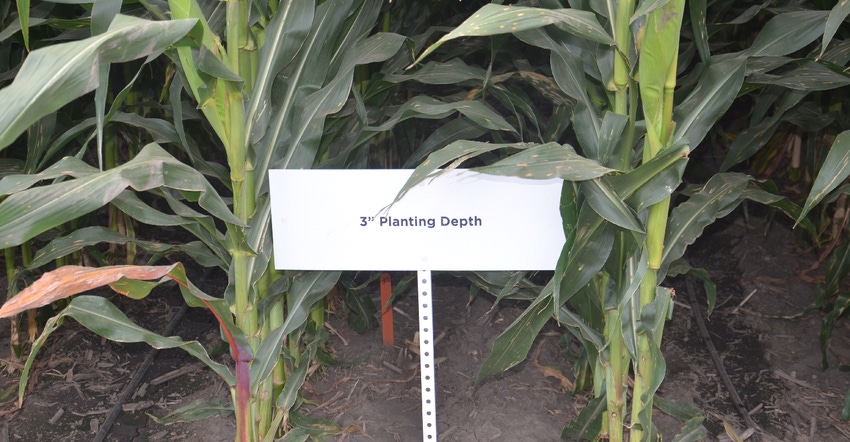
How deep should you plant corn this spring? It’s an age-old question. Your grandfather or great-grandfather stewed over it when he planted check-row corn with a two-row planter pulled by horses. You still face the same decision today, even if your planter is equipped with technology that can put seed exactly where you want it, and even adjust on the fly to make sure seed stays in moisture. You must still make decisions and set parameters on how shallow or deep you’re willing to plant.
Here’s some new information from the Agco Fendt Momentum Crop Tour that sheds more light on what should go into that decision-making process. Jason Lee, Agco field agronomist, notes that the Crop Tour included comparisons where corn was planted at different depths on purpose. New, sophisticated technology made sure each pass was at the depth selected. Derek Reusser, Agco product specialist, supervised Crop Tour plots at Chillicothe, Ohio.
Adjust, adjust, adjust
One of the biggest conclusions Reusser reached is that it pays to recheck seeding depth field by field and adjust depth to match soil conditions. For example, if you’re planting only 1 inch deep because it’s early and there’s plenty of moisture, but then it dries out, being 1 inch versus 1.5 inches deep could cost you at least $50 per acre.
How? Based on 19 trials over four years in Agco plots, there was a 14-bushel-per-acre drop for planting 1 inch deep versus 1.5 inches deep.
“Root development is very important, and extremely shallow seed depth can affect nodal root development — especially if nodal roots initiate near the surface and later soil conditions become hot and dry,” Lee says. Planting shallower than 1.5 inches usually causes non-uniform emergence due to moisture variability near the soil surface, he adds.
Related: Reduce soil compaction — and yield loss — from planter
Agco’s finding parallels what an Indiana Prairie Farmer/Purdue University study found during replicated trials to compare various seeding depths at the Purdue Throckmorton Research Center near Romney, Ind., a decade ago. The only significant difference in depths ranging from 1 inch to 3.5 inches was a nearly 20-bushel decrease in yield for corn planted only 1 inch deep. Soils dried out soon after planting. Corn in the 1-inch depth plots lagged corn in all other plots in development during the entire season.
To determine the optimum planting depth, Lee says it’s important to check moisture and the extended weather forecast. He adds that seeds should be planted into adequate, uniform soil moisture, which means adjustments may be needed, especially when moving to a new field with different soils or tillage practices.
On the other end of the scale, results from the 2020 Crop Tour plots indicate that while a 3-inch depth could still produce a good stand, emergence fell off at 3.5 inches. There was a 6-bushel loss going from 3 to 3.5 inches deep at one location. Harvest stand counts were 34,000 at 3 inches and only 25,000 at 3.5 inches.
About the Author(s)
You May Also Like




